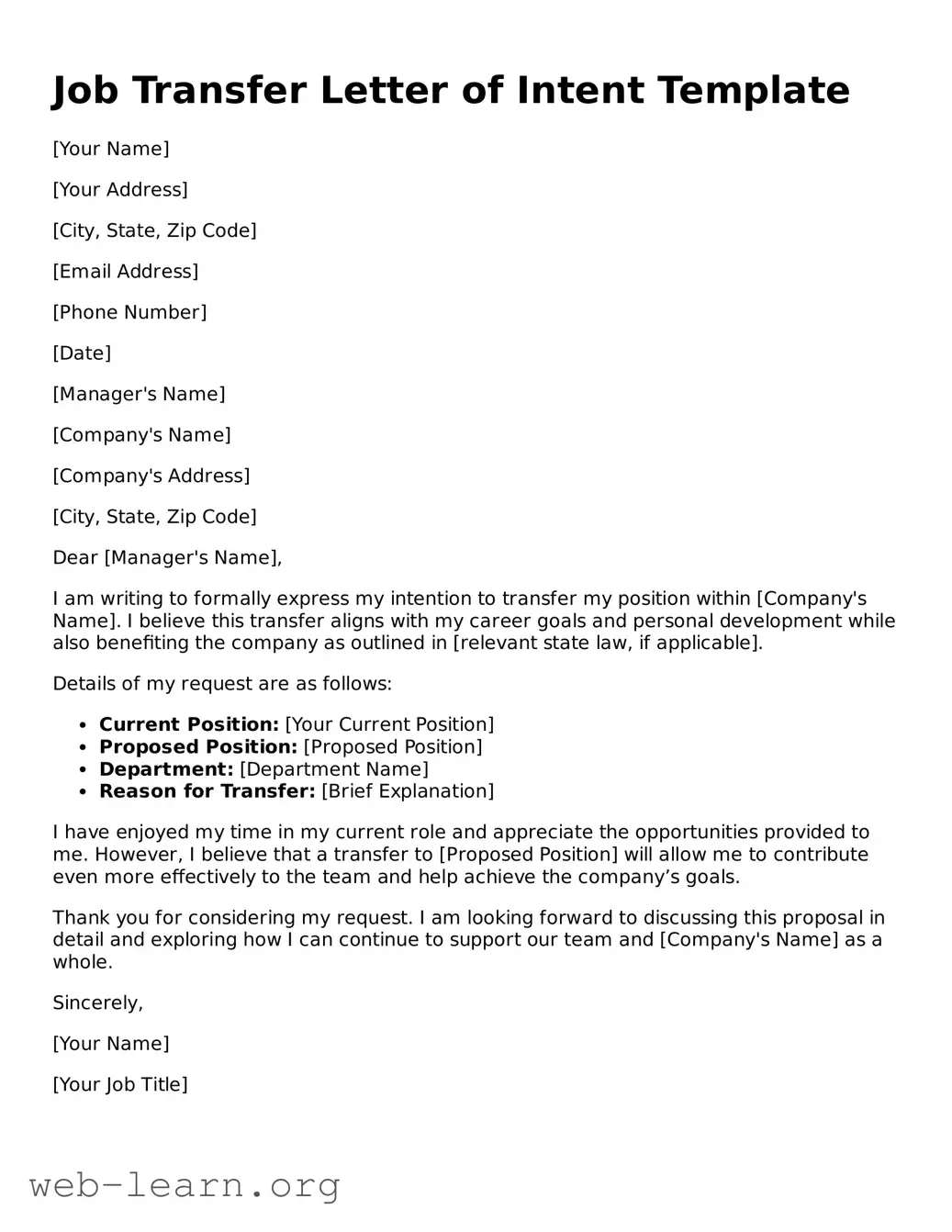Job Transfer Letter of Intent Template
[Your Name]
[Your Address]
[City, State, Zip Code]
[Email Address]
[Phone Number]
[Date]
[Manager's Name]
[Company's Name]
[Company's Address]
[City, State, Zip Code]
Dear [Manager's Name],
I am writing to formally express my intention to transfer my position within [Company's Name]. I believe this transfer aligns with my career goals and personal development while also benefiting the company as outlined in [relevant state law, if applicable].
Details of my request are as follows:
- Current Position: [Your Current Position]
- Proposed Position: [Proposed Position]
- Department: [Department Name]
- Reason for Transfer: [Brief Explanation]
I have enjoyed my time in my current role and appreciate the opportunities provided to me. However, I believe that a transfer to [Proposed Position] will allow me to contribute even more effectively to the team and help achieve the company’s goals.
Thank you for considering my request. I am looking forward to discussing this proposal in detail and exploring how I can continue to support our team and [Company's Name] as a whole.
Sincerely,
[Your Name]
[Your Job Title]
